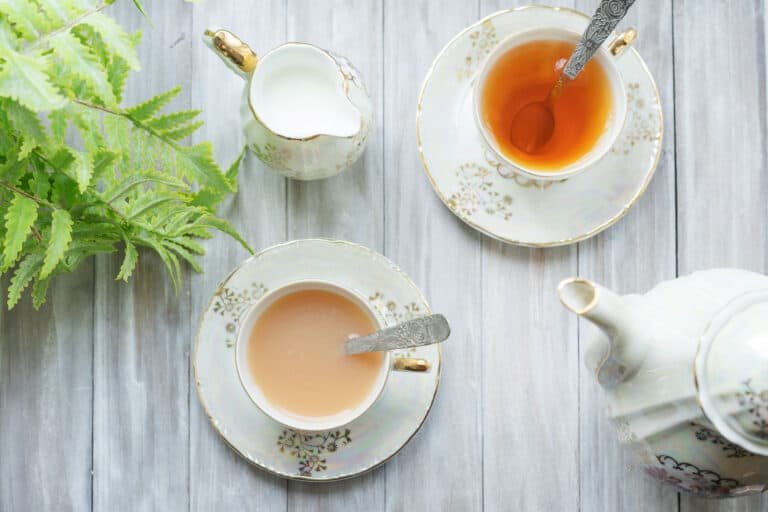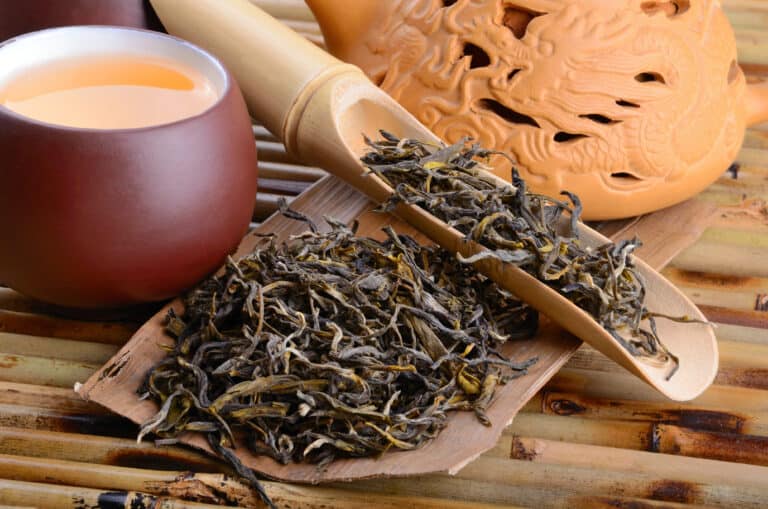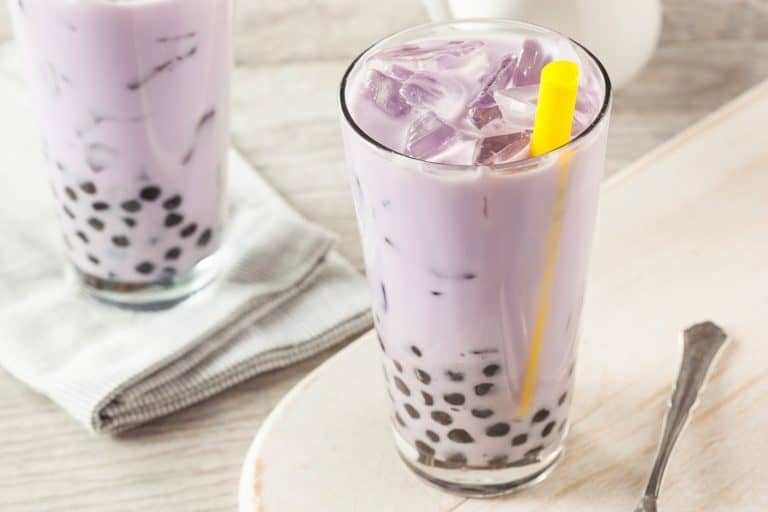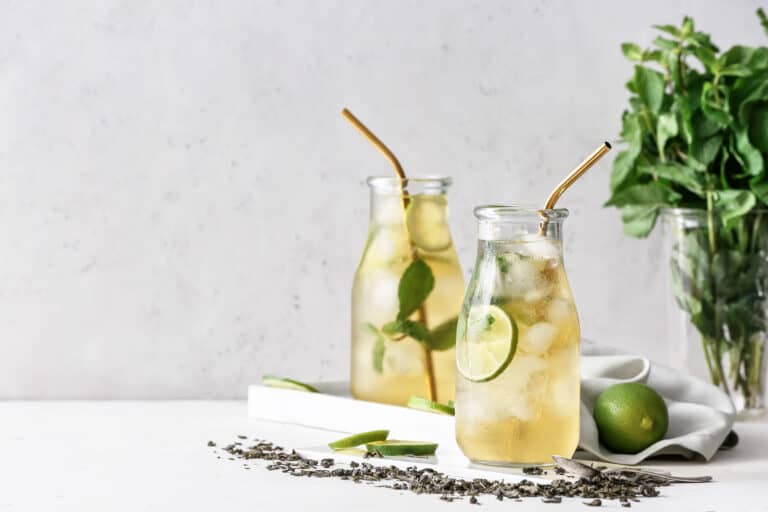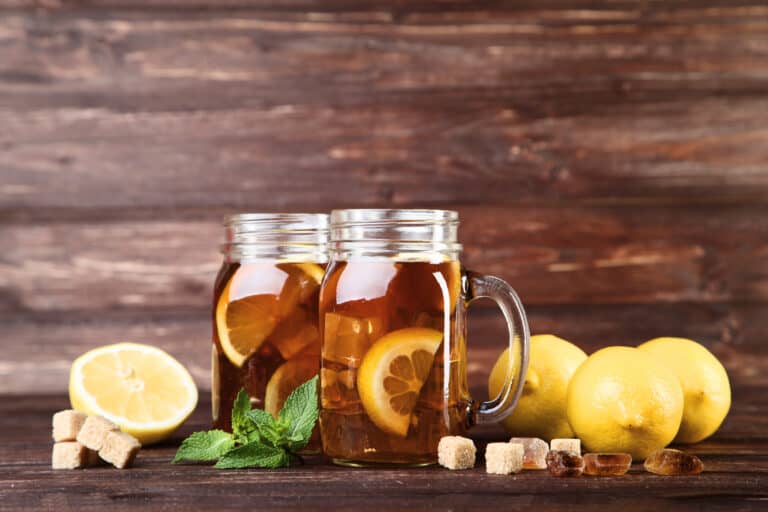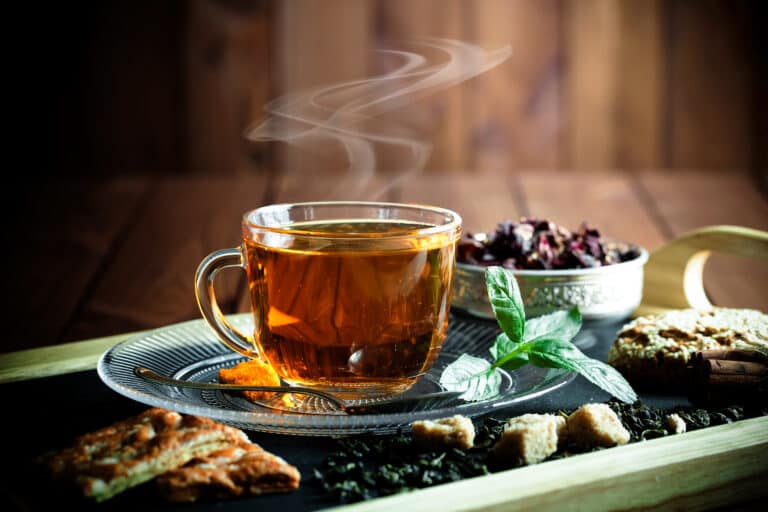How Many Times Can You Steep Tea?
Disclosure: This post may contain affiliate links, meaning I get a commission if you decide to make a purchase through my links, at no cost to you.
Tea lovers often wonder how many times they can steep their tea leaves to get the most out of their favorite beverage. The answer to “how many times can you steep tea?” largely depends on the type of tea being used and the quality of the leaves. While some teas can be steeped multiple times, others lose their flavor after the first infusion.
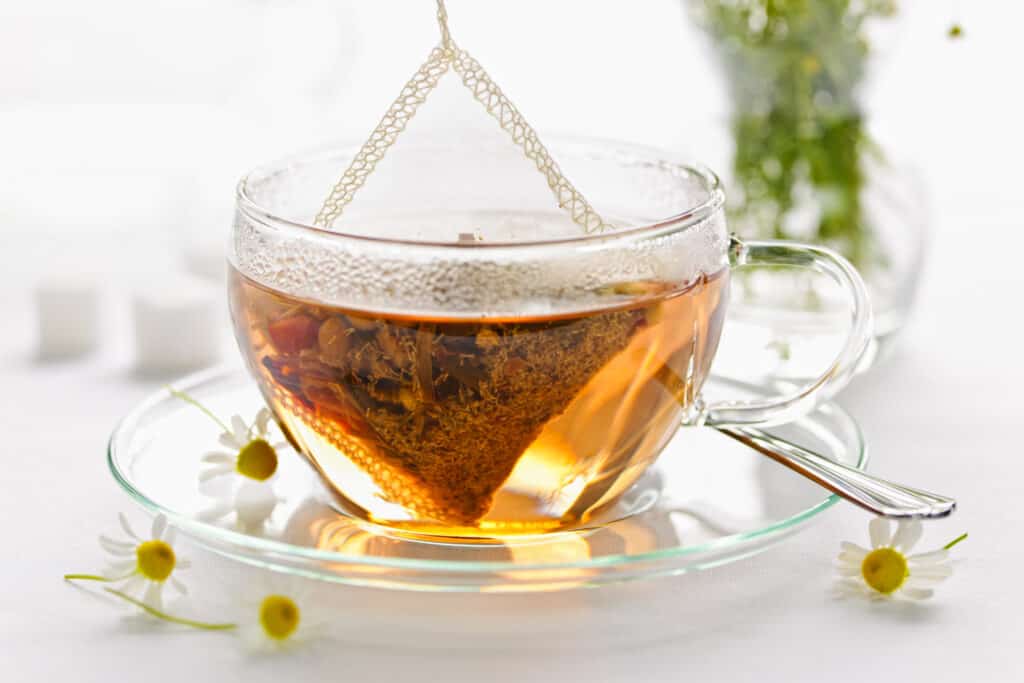
Loose leaf teas, like oolong and pu-erh, tend to be suitable for multiple infusions due to their larger and higher quality leaves. In fact, some pu-erhs can even retain their flavor after 10 re-steepings.
On the other hand, tea bags are often filled with tea dust or smaller particles, which release flavor quickly, making multiple steepings less effective.
Understanding the nuances of tea steeping can help tea drinkers fully enjoy the complexities of their favorite beverage.
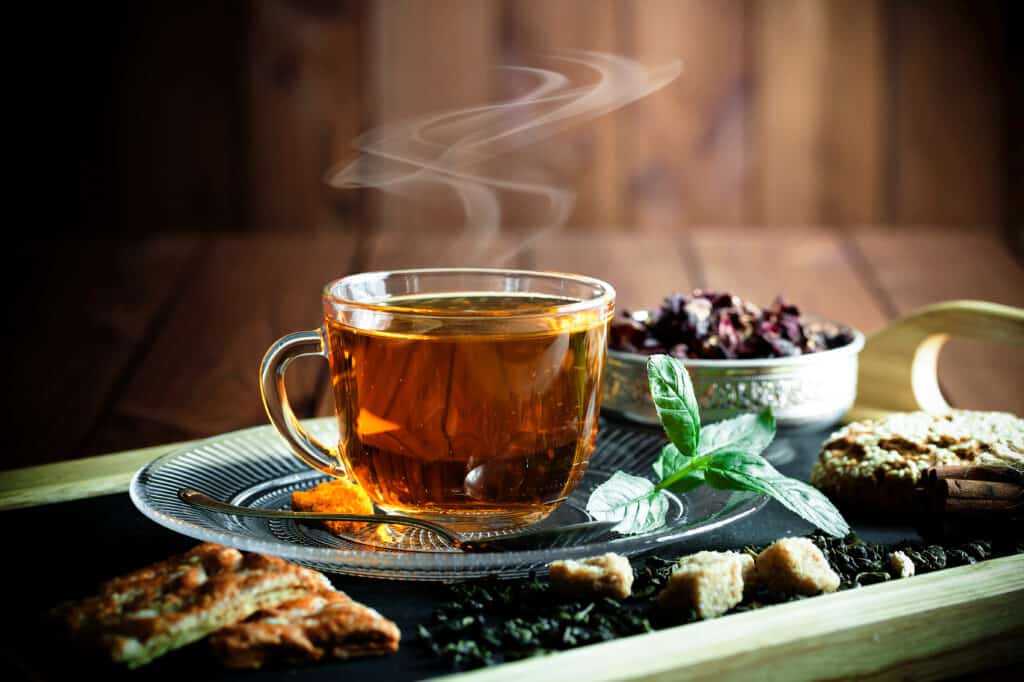
Types of Tea and Steeping Recommendations
In this section, we will discuss various types of teas and their recommended steeping times. The information provided is intended to help you get the most flavor and health benefits from your tea drinking experience.
Black Tea Leaves
Black tea, derived from the Camellia sinensis plant, is fully oxidized and generally has a stronger flavor than other tea types. When steeping black tea, the recommended time is 3 to 5 minutes in boiling water. You can adjust the steeping time according to your taste preferences. Common black tea variations include Assam, Darjeeling, and Earl Grey.
- Steeping time: 3 to 5 minutes
- Water temperature: boiling (212°F / 100°C)
Green Tea Leaves
Green tea is less oxidized than black tea and has a lighter, more delicate flavor. The steeping time for green tea varies, but it’s generally between 1 to 3 minutes in water that is slightly cooler than boiling (approximately 175°F / 80°C). Popular green tea varieties include Sencha and Matcha.
- Steeping time: 1 to 3 minutes
- Water temperature: 175°F / 80°C
Oolong Tea Leaves
Oolong tea is a partially oxidized tea that lies between black and green tea in terms of flavor and oxidation. Steeping time for oolong tea is typically around 3 to 5 minutes in water just below boiling (approximately 190°F / 88°C). High-quality oolongs can be re-steeped 2-3 times or more.
- Steeping time: 3 to 5 minutes
- Water temperature: 190°F / 88°C
White Tea Leaves
White tea is the least processed of all true teas, resulting in a light and delicate flavor. The recommended steeping time for white tea is between 1 to 3 minutes, using water temperatures of 170-185°F (76-85°C). Common white tea varieties include Silver Needle and Bai Mu Dan.
- Steeping time: 1 to 3 minutes
- Water temperature: 170-185°F / 76-85°C
Pu-erh Teas
Pu-erh tea is a unique type of tea that is fully fermented and aged. The fermentation process gives the tea a distinct earthy flavor that can withstand multiple steepings without losing its taste. Some pu-erh teas can be re-steeped up to 10 times. Steeping time for pu-erh tea is around 3 to 5 minutes in boiling water.
- Steeping time: 3 to 5 minutes
- Water temperature: boiling (212°F / 100°C)
Herbal Teas
Herbal teas are not derived from the Camellia sinensis plant, but instead come from a variety of plants like chamomile, mint, or hibiscus. The steeping time for herbal teas can range from 5 to 10 minutes, depending on the specific blend, in boiling water.
- Steeping time: 5 to 10 minutes
- Water temperature: boiling (212°F / 100°C)
Understanding the different types of tea and their recommended steeping times will help you get the most out of your tea leaves or tea bags, ensuring a flavorful and enjoyable experience.
Steeping Methods and Time
Hot Water Steeping
Hot water steeping is the most commonly used method for brewing tea. The key factors to consider when steeping tea with hot water are water temperature and steep time. Different tea types require different temperatures and steeping times to extract the optimal flavor.
- Black tea: Steep at 212ºF for 5 minutes
- Green tea: Steep at 175ºF for 3 minutes
- White tea: Steep at 175ºF for 3 minutes
- Chai tea: Steep at 212ºF for 5 minutes
- Herbal tea: Steep at 212ºF for 5 minutes
It’s essential to follow the recommended steeping time for each tea type to avoid over-extracting the leaves, which can result in a bitter taste. For some teas, you can steep multiple times, though the flavor may change with each infusion. For example, oolong teas can usually be resteeped 2-3 times, while some pu-erh teas can retain flavor after 10 re-steepings.
Cold Brew Tea
Cold brew tea is a method where tea leaves are steeped in cold water for an extended amount of time. This method typically uses a longer steeping time than hot water steeping, as it extracts flavors more slowly. Cold brew tea is ideal for teas that are susceptible to bitterness when brewed with hot water.
For cold brew tea, steep tea leaves in cold water and refrigerate for at least 3-4 hours, or even up to 8-12 hours for a stronger, more concentrated taste. The exact amount of time will depend on the tea type and your personal preferences.
When experimenting with steep times and temperatures, remember to avoid making exaggerated or false claims, and maintain a confident, knowledgeable, and neutral tone. This way, your information remains reliable and useful to your readers.
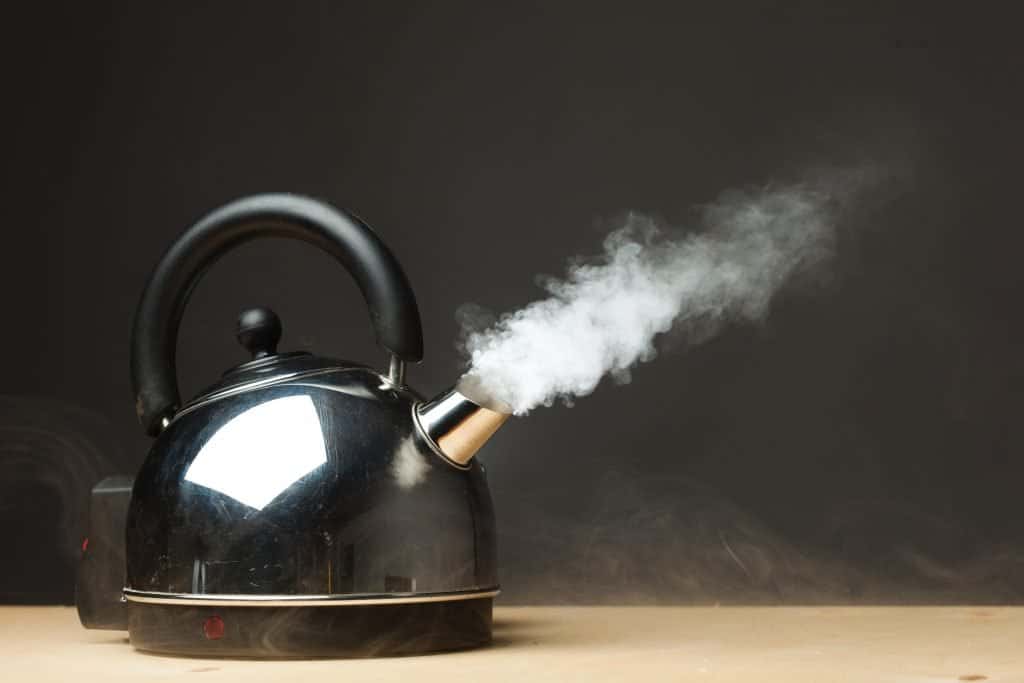
Factors Affecting Flavor and Quality
Water Quality
One crucial factor in steeping tea is the quality of water used. Tap water may contain contaminants, minerals, or chemicals that can negatively impact both the flavor profile and potential health benefits of the tea. It is recommended to use filtered water or spring water when steeping tea for the best flavor and quality.
Tea Quality
The quality of the tea leaves themselves plays a significant role in determining the steeping potential and overall experience. High-quality tea typically offers a more complex and rounded flavor profile, allowing for multiple infusions and greater enjoyment. Low-quality tea leaves may produce a weaker or more bitter taste, limiting the number of times they can be steeped. To fully appreciate the nuances of tea, experiment with various high-quality tea such as those found in specialty tea shops or online retailers.
Tea Storage
Proper tea storage is essential to maintain the flavor and quality of your tea leaves. For optimal freshness and flavor, store tea in an airtight container, away from direct sunlight or heat. Exposure to air, moisture, or heat may degrade the quality of the tea, resulting in a negative impact on its flavor and steeping potential.
Personal Preference
Personal preference significantly influences how many times you can steep tea. While some people may enjoy a more potent brew, others may prefer a milder flavor. Experiment with different steep times, water temperatures, and tea varieties to find your ideal taste.
Ultimately, the factors affecting the flavor and quality of steeped tea are interrelated. The water quality, tea quality, storage, and personal preference all contribute to the overall experience. To achieve the best flavor and enjoy the full range of health benefits from your tea, pay attention to these factors and experiment with various steeping techniques.
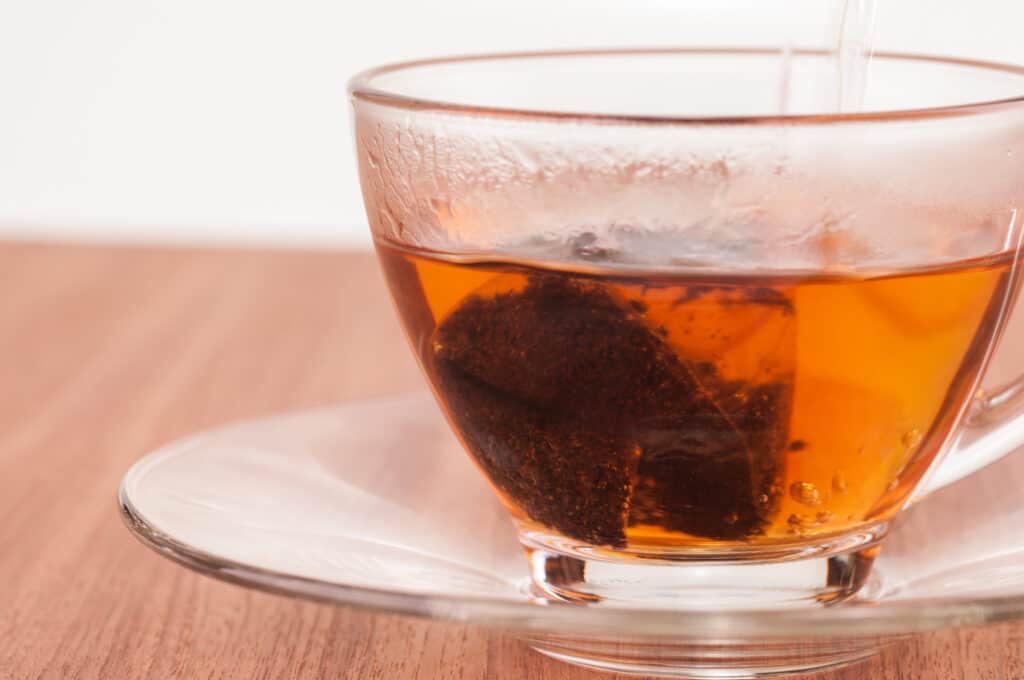
The Steeping Process
First Steeping
The first steeping is the initial process of extracting flavors and health-promoting compounds from tea leaves. To achieve the perfect first brew, it’s essential to pay attention to the temperature and steeping time. For example, black tea should be steeped at 212ºF for 5 minutes, while green and white teas require 175ºF for 3 minutes. Chai and herbal teas are best prepared at 212ºF for 5 minutes source. It’s important not to rush or over-steep the tea during the first steeping, as this can affect the taste and overall quality.
Second Steeping
The second steeping, or second infusion, offers the opportunity to enjoy nuanced flavors from the tea leaves. Typically, the second cup will have a slightly different taste profile compared to the first. To get the best results from the second steep, it’s recommended to increase the steeping time by 50%. However, avoid steeping for too long, as the best flavors are usually infused within the first round of steeping source. Additionally, refrain from squeezing the tea bag or pressing the tea leaves during the second steep as this can lead to a bitter taste.
Subsequent Steepings
High-quality tea leaves are capable of providing multiple infusions, with some teas even improving with each subsequent steep. For instance, in Gong Fu Cha, a Chinese tea ceremony, tea leaves are steeped multiple times in a single pot or cup source. In this method, the initial infusion might only last for a few seconds. The idea is to experience the evolving flavors with each steep.
To perform subsequent steepings, increase the steeping time by a few seconds to extract more flavors. Remember that over-steeping can result in a bitter taste. Ultimately, the number of times tea can be steeped depends on the type and quality of the tea leaves. It’s essential to observe the changes in flavor, aroma, and color with each steeping to determine when the tea has reached its limit.
By following these guidelines, tea enthusiasts can enjoy multiple infusions from a single batch of tea leaves, making the most of each steeping process.
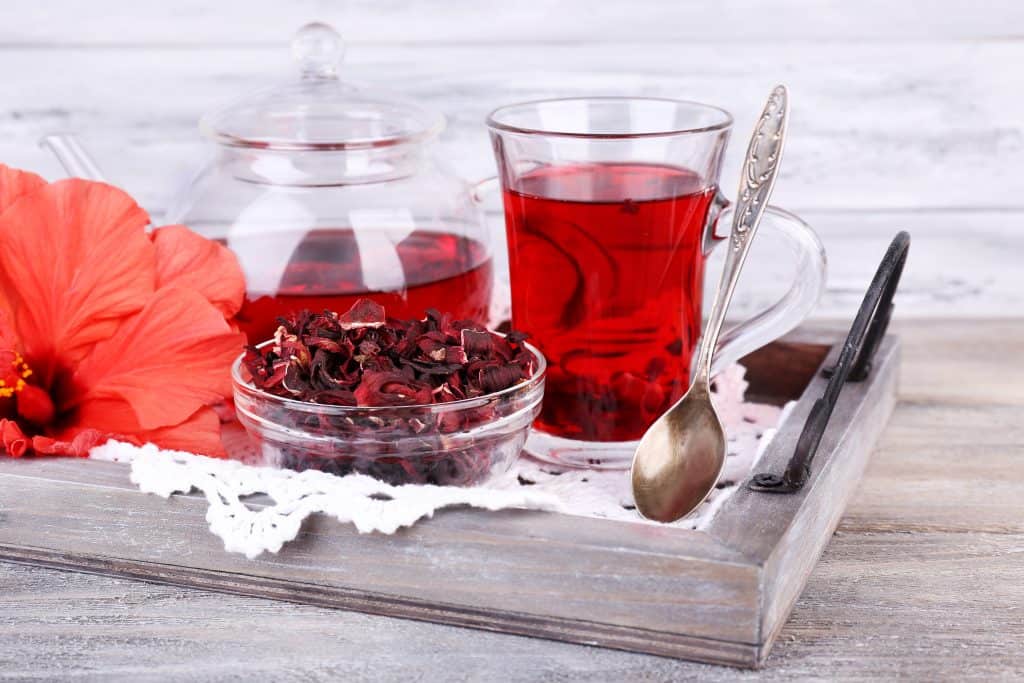
Maximizing Flavor and Benefits
Steeping tea is an art that can greatly affect the final result in terms of flavor and health benefits. In this section, we will focus on the different aspects of steeping tea, specifically loose-leaf tea, to help maximize its flavor and benefits.
Loose-leaf tea, unlike prepackaged tea bags, offers a wide range of unique flavors and provides a better flavor profile due to the use of whole leaves. Whole leaves retain more natural oils, which contributes to a more robust flavor experience. To fully enjoy these unique flavors and benefits, it is important to follow proper steeping techniques and times.
When it comes to steeping strong teas, such as black and oolong varieties, it is crucial to find a balance between water temperature and steeping time to achieve the desired robust flavor. Typically, black teas should be steeped for about 3-5 minutes, whereas oolong teas should steep for approximately 1-2 minutes. However, it is essential to periodically taste the tea while it steeps and adjust accordingly, as factors like tea leaf size may impact the ideal steeping time.
In order to maximize flavor and benefits while minimizing waste, consider using less water when steeping loose-leaf tea. By doing so, you can control the strength of the tea while still using the same amount of tea leaves. Additionally, it is important to avoid squeezing the tea leaves or tea bag, as this may lead to a bitter taste.
Ultimately, the best way to maximize the flavor and benefits of loose-leaf tea is to experiment with different steeping techniques and times. Each tea lover may have personal preferences, and the perfect cup might differ for everyone. By practicing and perfecting steeping strategies, one can consistently enjoy the full potential of their loose-leaf tea.
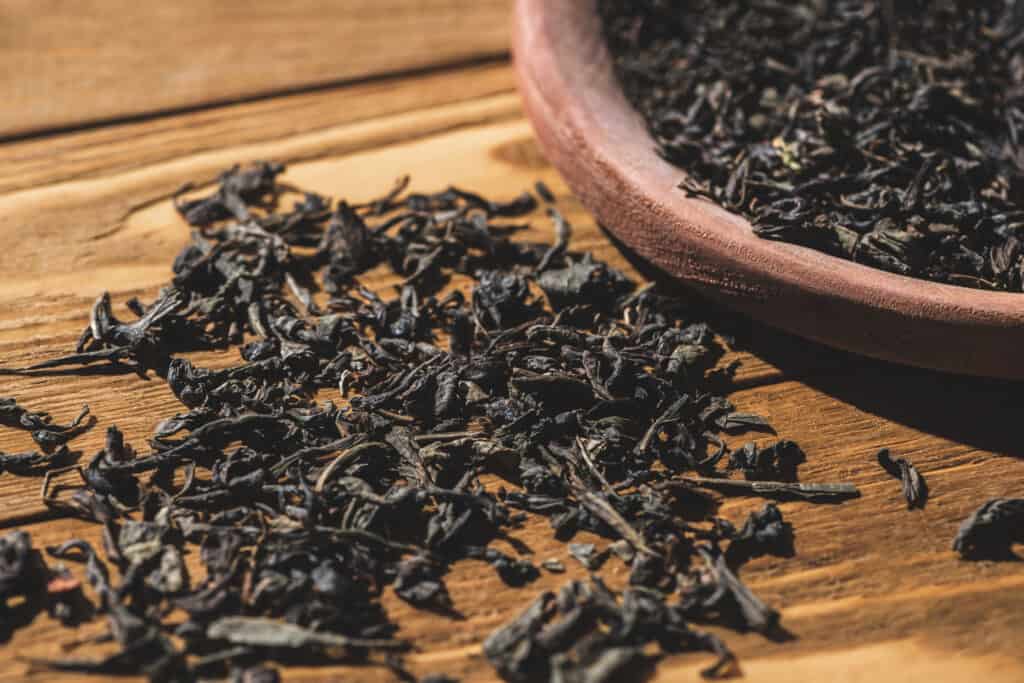
Reusing Tea Leaves
Tea lovers often wonder about reusing tea leaves. Fortunately, there are several ways to maximize the flavor and enjoyment of tea leaves throughout multiple infusions.
Iced Tea
One popular method of reusing tea leaves is by making iced tea. To do this, simply steep the tea leaves as you usually would for a hot tea, and then use the infused tea to make a pitcher of iced tea. It is possible to reuse tea leaves 3-4 times, although the flavor will gradually become weaker with each subsequent infusion. Additionally, using smaller vessels can help maintain stronger tea flavors because fewer tea leaves are required.
Tea Taste Changes
It’s essential to be aware that the tea taste may change with each infusion. The flavor profile will evolve, revealing different nuances and subtle characteristics not present in the initial cup. Consequently, tea lovers should embrace these changes and enjoy a unique taste experience with each infusion.
In conclusion, reusing tea leaves can be a sustainable and enjoyable practice for tea lovers. By experimenting with iced tea and understanding how the tea taste changes with each infusion, one can reap the full benefits of their favorite loose leaf tea.
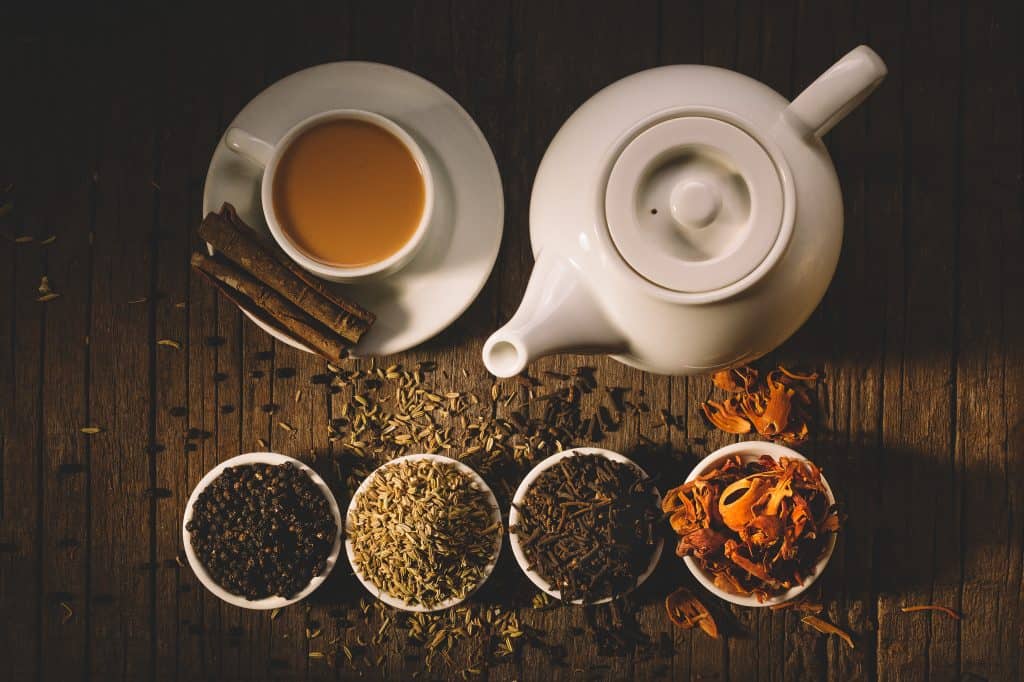
Cautions and Considerations
When re-steeping tea leaves, it’s essential to be mindful of a few factors that could impact the steeping experience and the quality of your brew.
Firstly, consider the caffeine content in your tea. The extraction of caffeine tends to occur in the early stages of steeping. When you re-steep tea leaves, the caffeine content will likely reduce in subsequent infusions1. This is relevant for those who are sensitive to caffeine or have a preference for a specific caffeine level in their tea.
Secondly, it’s crucial to pay attention to the temperature of your water. Re-steeping tea leaves with water that is too cool can result in a weak or bland infusion. On the other hand, water that is boiling or close to a rolling boil could scald sensitive leaves, such as green teas, leading to bitter or astringent flavors2. To make the most of the flavor potential of your tea leaves, ensure that you are brewing at the appropriate temperatures for the specific type of tea you’re using.
Thirdly, note that leaving wet tea leaves at room temperature for too long can potentially create a breeding ground for harmful bacteria3. It’s advisable to either make your re-steepings in quick succession, or to store the wet leaves in a clean, airtight container in the fridge until you are ready to use them again.
To summarize, when re-steeping tea leaves, keep in mind the following considerations:
- Caffeine content may vary between infusions
- Ensure the correct water temperature for the specific tea type
- Avoid leaving wet tea leaves at room temperature for extended periods to prevent bacterial growth
By being cautious of these factors, you’ll be more likely to enjoy multiple flavorful and safe infusions from your tea leaves.
Happy Brewing!
Amanda
